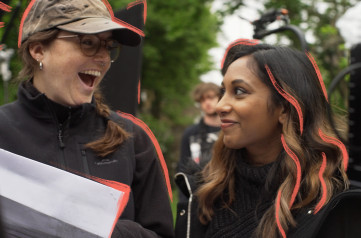
Insect Diet. EU Food Safety Agency Approves Manufacture of Food with Yellow Mealworm13.01.2021
Apparently, dried mealworm beetle larvae taste like peanuts.
It lives in bird nest and under the bark of deciduous trees, but can also be found in grain products—it’s been known to be particularly fond of poorly maintained flour and grain storage facilities. The mealworm beetle, a member of the darkling family, is one of the most common beetles in the world. Humans have been breeding mealworm beetles for quite some time—not only is it rather simple to raise (on a lining of fresh oats or wheat bran, for example), it can be used as a balanced feed for lizards, geckos, and other captive reptiles. It also serves quite well as fish bait.
The mealworm beetle larvae have also been used to make food. In the past, the insect has mostly been eaten in Southeast Asia, where it can still be found at food markets today. Fried or baked larvae can be served as a quick snack or added to cookies, noodle dishes, burgers, and smoothies. In some countries, it’s also been added to tequila-flavored sweets. The common insect has been growing popular chefs not only on account on its novelty as a widespread ingredient, but also because mealworms contain a variety of nutrients beneficial to humans—they are rich in protein, potassium, zinc, sodium, selenium, and iron. They even have more vitamins than beef.

Although entomophagy, that is the consumption of broadly defined insects, has a number of proven health benefits, Europe has only recently been making inroads into the practice. The main reason for the lack of caterpillars, bees, locusts, and ants in the Western diet is not their unavailability, but rather the cultural perception of insects. Much of Western culture considers insects repulsive and sees them as pests, sometimes even dangerous ones. The European Food Safety Agency’s recent decision, reported by The Guardian, may ultimately help revise our stereotypes about consuming insects and help make them a staple of a more environmentally-friendly diet.
“This first EFSA risk assessment of an insect as novel food can pave the way for the first EU-wide approval. Our risk evaluation is a decisive and necessary step in the regulation of novel foods by supporting policymakers in the EU in making science-based decisions and ensuring the safety of consumers,” says Ermolaos Ververis, a safety officer with EFSA. To date, only Micronutris has received approval from the EU agency. The company’s products are expected to appear on French supermarket shelves soon.
see also
- Hiplet, or When Ballet Meets Hip-Hop. See the Music Video-Like Short Documentary Screened at SXSW
News
Hiplet, or When Ballet Meets Hip-Hop. See the Music Video-Like Short Documentary Screened at SXSW
- Papaya Young Directors 2021: breaking records and setting new challenges for the industry
 Papaya Young Directors
Papaya Young DirectorsNews
Papaya Young Directors 2021: breaking records and setting new challenges for the industry
- In a First, Rapper Logic Tops the New York Times Best Seller List

News
In a First, Rapper Logic Tops the New York Times Best Seller List
- Marysia Makowska: Advocate for Imperfection
 Papaya Films
Papaya FilmsPeople
Marysia Makowska: Advocate for Imperfection
discover playlists
-
Papaya Young Directors 6 #pydmastertalks
 16
16Papaya Young Directors 6 #pydmastertalks
-
Teledyski
 15
15Teledyski
-
Music Stories PYD 2020
 02
02Music Stories PYD 2020
-
Papaya Films Presents Stories
 03
03Papaya Films Presents Stories
